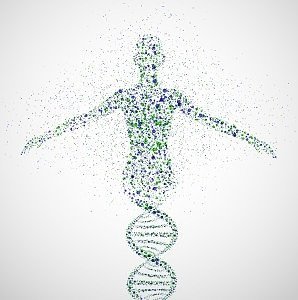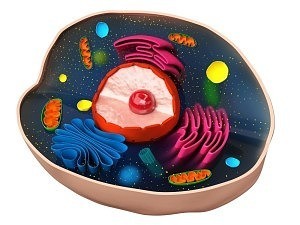The Truth About Obesity and Physical Activity
You have probably heard the good, old mantra – it is not food that is making you fat, it is the chronic lack of physical activity. In some cases, the adage is true: you cannot expect to lose weight unless you get up and start working out. Unfortunately, tough trainings alone will not get you far on your slimming path because excess weight and obesity cannot be always pegged on sedentary lifestyle alone. Hormones, diet, gender, age, genes, and certain medical conditions also play an important role when it comes to the figures on the scale, and there are numerous science-based facts to support this.
Health Issues and Medications Can Trigger Obesity
Although scientists have not yet figured out all of the complex connections between body mass and hormones, polycystic ovary syndrome (PCOS) was found to be a factor in obesity and chronic weight issues. Around 50% of women diagnosed with PCOS are either overweight or obese, and some studies show that 70% of them suffer from insulin resistance, a condition that also contributes to weight gain. Other health issues hiding behind the obesity label include Cushing’s disease (a condition characterized by the excess production of cortisol in the adrenal glands) and hypothyroidism (an insufficient production of the thyroid hormone by the thyroid glands). Depression and disruption of sleep cycles can also fuel an existing weight problem, but medications used to remedy them do not always promise hope. In fact, some drugs can even trigger weight gain.
Certain Medications Can Contribute to Weight Gain
The list of medications linked to unwarranted weight gain and obesity includes certain antidepressants, anticonvulsants, antihistamines, oral contraceptives, a few diabetes and high blood pressure medications, and most corticosteroids. This is bad news for both patients with chronic disorders and the pharmaceutical industry, but it is true: treating one problem can impact the development of another health issue, especially in terms of body mass. In these cases, physical activity can promote weight loss, but trainings alone will not be an effective remedy for obese and overweight persons whose primary cause of body mass problems is concealed behind pharmaceutical products and not just a sedentary lifestyle and an improper diet.
No Amount of Physical Activity Can Burn Thousands of Calories
We all know that habitual consumption of starchy foods, sweets, and too much trans fat inevitably shows in the belly area – but workouts are not a sufficient lifestyle change to reduce waistline inches. Do not fool yourself. According to the simple laws of physics, the more empty calories you eat, the chunkier you will be, and no amount of training will produce a visible effect without long-term dietary adjustments. Our bodies are intelligent mechanisms; they use fuel obtained through food for everyday activities, and store extra calories as fat for a rainy (i.e. foodless) day. This means that overweight and obese people (those of us with more than 20% weight than is considered ideal for our build, age, and gender) have surplus energy accumulated as fat, and they need to burn it off. Admittedly, you cannot starve for days and weeks on end so that your body could shed all the built-up fat – but what you can do is watch your daily calorie intake and swap foods that promote weight gain for figure-friendly alternatives. Of course, an odd cheat day is okay as it can help keep leptin levels and your dieting motivation in check, but bear in mind that cheat days occur usually once a week, not every time you feel sad, lonely, or bored.
Heredity Is a Force to Be Reckoned With
Some people use genetics as an excuse to justify their extra pounds, but heredity is not just a phrase to be thrown around lightly. Although their share in the total obesity count is relatively limited, certain hereditary conditions such as Prader-Willi syndrome can in fact be a major stumbling block on the quest for a lean figure. Certain studies note that heritability estimates for corpulence are surprisingly high (typically >0.70), as four genes in the human DNA (MC4R, PCSK1, POMC and BDNF) are responsible for monogenic and polygenic obesity. In addition to that, defects in eight genes have been linked to appetite regulation disorders, and there are also scientific studies that argue weight and body shape can be influenced by as many as 97 different gene variants. Although training can help with the fat-to-muscle ratio, certain genetic factors can get in the way of weight loss success and cause persistent chubbiness in spite of everyday workouts and an active lifestyle.
Although exercising is inextricable from increased muscle mass, weight loss, and a slender shape, it will produce little or no results unless other long-term factors that contribute to your weight problems are tackled as well. This means that you should run medical tests and establish the real reason behind your chubby looks, such as a lack of hormonal balance, insulin resistance, heredity, or simply one too many trips to the cookie jar.
Recommended Reading:
- How I Lost Over 150 Pounds, and How My Life Changed
- The Power of Our Hormones and How To Balance Them
- Is Your Gut Health Making You Fat?
- Gluten, Candida, Leaky Gut Syndrome, and Autoimmune Diseases
- Detox Cheap and Easy Without Fasting – Recipes Included
- After taking antibiotics, this is what you need to do to restore healthy intestinal flora
Sources:
- Obesity and the polycystic ovary syndrome – NCBI
- Sleep and obesity – NCBI
- Polycystic Ovary Syndrome (PCOS) and Weight Gain – Web MD
- Screening for Cushing’s Syndrome in Obese Patients – NCBI
- Thyroid and Obesity: An Intriguing Relationship – Endocrine Society
- Depression and Obesity – Everyday Health
- Is Your Medicine Cabinet Making You Fat? – Medicine Net
- Are Your Meds Making You Gain Weight? – Web MD
- The truth about fats: the good, the bad, and the in-between – Harvard Health Publications
- The Truth About Cheat Days – Symmetry Gym
- Need to know Nutrition for children withPrader Willi Syndrom; A Guide for Parents and Carers – Prader Willi Syndrome Association
- ‘Obesity genes’ help determine size and shape, studies find
- Genetics of obesity and the prediction of risk for health

